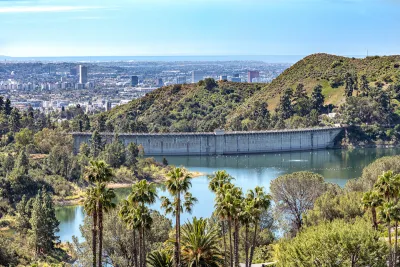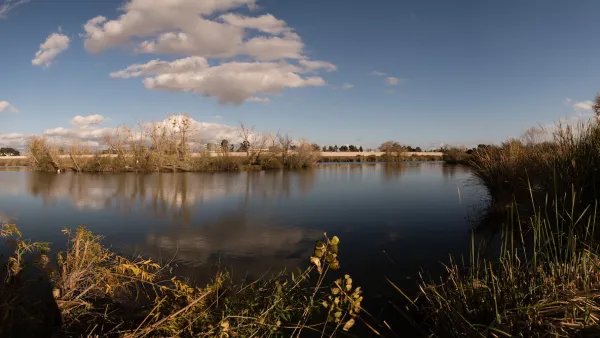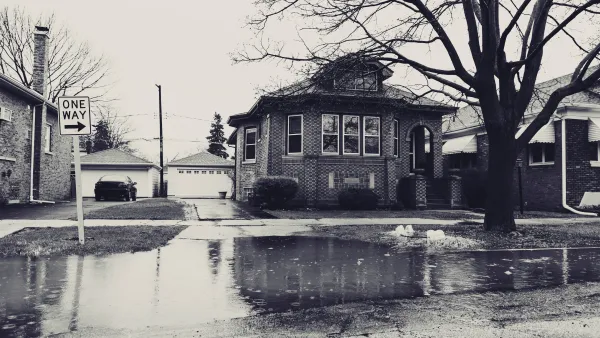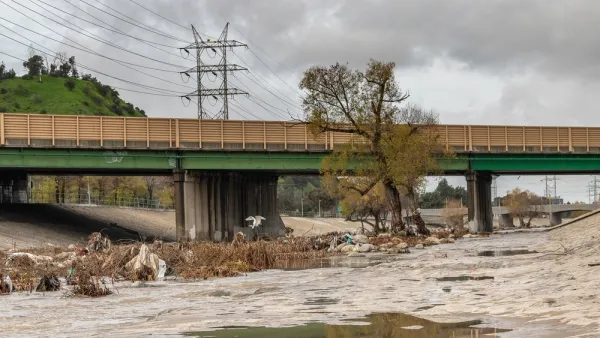A new study reveals that if California could collect and treat more stormwater in cities, it could provide enough water to supply a quarter of the state’s urban population.

Cities across the United States face a range of water challenges, including intensifying impacts of flooding and drought, water scarcity risks, constraints on traditional water supplies facing peak water limits, and water pollution. Innovative ways are needed to address these challenges and improve long-term water resilience.
Stormwater capture is a promising approach. Specifically, It can help narrow the gap between water supply and demand by augmenting and diversifying water supplies. It can also mitigate impacts on communities from intensifying flooding and drought and reduce water pollution. In addition, stormwater capture offers additional co-benefits, such as greening communities and cooling urbanized areas.
As reported by Rachel Becker in this article, a new assessment by the Pacific Institute, in partnership with 2NDNATURE, quantifies the volumetric potential of urban stormwater runoff across the country. The study estimates urban areas have the potential to generate 59.5 million acre-feet of stormwater runoff annually on average. This is equivalent to an annual average of over 53 billion gallons per day. It equals 93 percent of municipal and industrial water withdrawals in 2015, the most recent year with available data.
With respect to California, the analysis found that the Golden State sheds nearly 2.3 million acre-feet of precipitation from pavement, roofs, sidewalks and other surfaces in cities and towns annually. If it were captured and treated, that would be sufficient to supply over a quarter of California’s urban water use or almost 7 million Southern California households each year.
FULL STORY: California’s urban runoff flows down the drain. Can the drought-plagued state capture more of it?

Analysis: Cybertruck Fatality Rate Far Exceeds That of Ford Pinto
The Tesla Cybertruck was recalled seven times last year.

National Parks Layoffs Will Cause Communities to Lose Billions
Thousands of essential park workers were laid off this week, just before the busy spring break season.

Retro-silient?: America’s First “Eco-burb,” The Woodlands Turns 50
A master-planned community north of Houston offers lessons on green infrastructure and resilient design, but falls short of its founder’s lofty affordability and walkability goals.

Test News Post 1
This is a summary

Analysis: Cybertruck Fatality Rate Far Exceeds That of Ford Pinto
The Tesla Cybertruck was recalled seven times last year.

Test News Headline 46
Test for the image on the front page.
Urban Design for Planners 1: Software Tools
This six-course series explores essential urban design concepts using open source software and equips planners with the tools they need to participate fully in the urban design process.
Planning for Universal Design
Learn the tools for implementing Universal Design in planning regulations.
EMC Planning Group, Inc.
Planetizen
Planetizen
Mpact (formerly Rail~Volution)
Great Falls Development Authority, Inc.
HUDs Office of Policy Development and Research
NYU Wagner Graduate School of Public Service




























